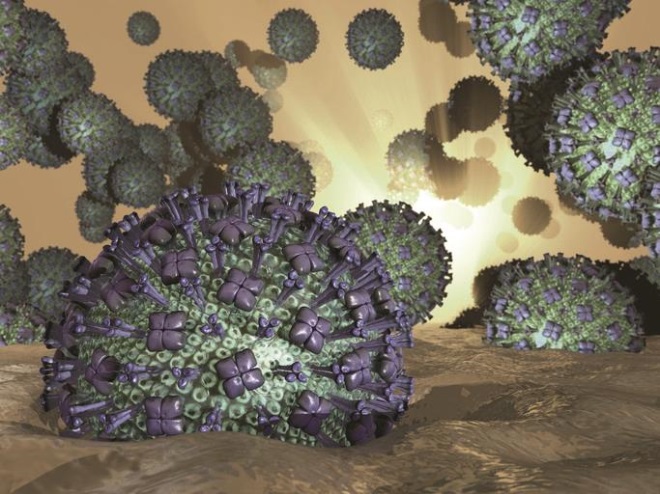
Source: Hipersynteza/Science Photo Library
A vaccine against human respiratory synctial virus (pictured) is being researched by a team in Belgium
Human respiratory syncytial virus (HRSV) is a major cause of respiratory tract infections in infants. High-risk children may receive prophylactic palivizumab therapy; however, no effective antiviral or anti-inflammatory treatment exists.
A vaccine against HRSV may now be on the horizon, following work by Bert Schepens and Xavier Saelens from Ghent University, Belgium, and team, published in EMBO Molecular Medicine[1]
(online, 8 October 2014). They have developed a vaccine based on the extracellular domain of the Small Hydrophobic protein (SHe) of HRSV and found that it induced immune protection in mice and rats, acting via a mechanism that differs from the natural immune response.
“The SHe-based vaccine could be linked to other candidate vaccines directed against the larger envelope proteins of the virus, to double hit the virus,” the researchers suggest.
References
[1] Schepens B, Sedeyn K, Vande Ginste L et al. Protection and mechanism of action of a novel human respiratory syncytial virus vaccine candidate based on the extracellular domain of small hydrophobic protein. EMBO Molecular Medicine 2014. doi: 10.15252/emmm.201404005 (accessed 8 October 2014).


